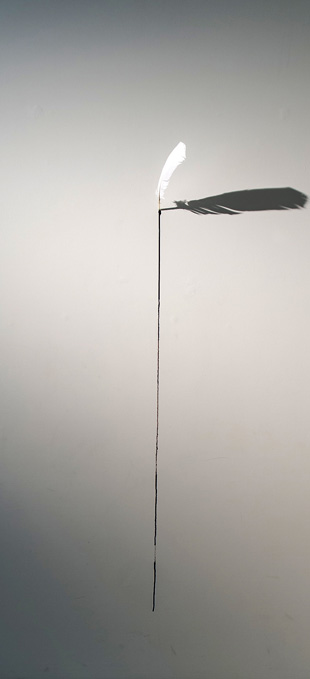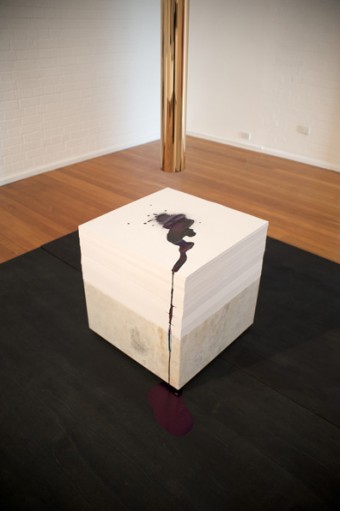When I saw applications for Writers Victoria’s CALD Mentorship program, I hesitated in applying, as the emphasis was on being from a non-English speaking background (NESB). I wasn’t sure if this was applicable to me. I explained to the program coordinator that I am of Peranakan-Chinese Malaysian heritage, and my family languages are Hokkien and Baba Malay, however, because my parents weren’t fluent in the same language group, they settled on teaching me English as my first language. In primary school, all my schooling was in Malay. When I first arrived in Australia, at 14, I was placed in a Year 9 class in the English as a Second Language (ESL) class. I hated it because the level was too easy for me, but I had no choice. I was told that I had a heavy accent by my teachers and to speak slower to be understood. My experience of high schooling in Australia has been shaped by this experience of being a ‘second-class’ English language speaker and writer, who also excelled in the ‘normal’ Literature VCE classes later on. (Yes, I wrote all that in my email to her!) I also pitched that the work that I wanted to submit for consideration would be a collection of short stories of growing up bi-cultural, bi-lingual, queer, traversing the borders of Malaysia and Australia.
The program coordinator said I qualified and I could submit, and so I did, even though at the back of my mind, I still wondered about my identity of fitting/not-fitting into a NESB category. It had resonances for me of being part of the ESL group at high school. I was tired of being only accepted as a ‘second-class’ English language writer, still not good enough to be part of the ‘normal English classes’.
In submitting the application, I was very honoured to be one of the five selected by the Writers Victoria CALD Mentorships mentor, historian and novellist, Maria Tumarkin. I hope to use the word honour in the most gracious and heart-felt way because I had no idea that the writing journey ahead with Maria was to be filled with my exploration of grief.
I also felt relief from meeting the other writers in the first session – Hoa Pham, Beverly Almeida, Fatima Sehbai, Hariklia Heristanidis. Our little group could discuss and vent about how difficult it is not to fit into an Anglo-Celtic-Christian Australian literary framework; there was no need for justifications or explanations, everyone just understood how normalised and pernicious this system has been and unfortunately, still is.
In our one-on-one meetings, Maria and I talked about what I’d like to write about. While I wanted to explore my adolescent bicultural queer identity, shadowing this was also knowing that I would return to the country of my birth this year, having not “gone home”, “been back” (all those words of return that hang heavy with expectation in conversation between first generation migrants) for over 10 years.
Over that ten year period, I have tried to write about the loss of my maternal grandmother, a victim of domestic violence, at the hands of my grandfather. I have, over the years, resisted writing publicly about the circumstance of my grandmother’s death – my mind going in hyper drive – shame, loss of face, humiliation, anger, the possibility of my mother’s re-traumatisation, and me a crying mess; I was tired of crying. To navigate this territory, to re-member, or un-cover the events is too sad, painful. In my conversations with Maria, we discussed how violence is not a monster ‘out there’ to be destroyed. I didn’t want to reduce my grandmother to ‘victim’, my grandfather to ‘violent perpetrator’. So, over the ten years, I have sat in front of a computer screen, to write something, anything, to rid myself of this shadow. I have tried to fictionalise the experience, but the story failed. I have tried to write indirectly about what happened, but the story failed.
In the introductory group meeting with Maria, she said something that really stayed with me, “Silence is not the absence of speech”.
I found out later, that this sentence was from notes from her speech given at the opening of the Blake Prize at The Jewish Museum of Australia this year. By incredible coincidence, the artwork that she had chosen to write about in her speech, “Depart without return”, was by Shoufay Derz, an artist who I know, a friend, of mutual friends Owen Leong and Amadeo Marquez-Perez. Shoufay had published Maria’s notes from her speech on her website.
The sentence in conversation in our group meeting was part of Maria’s concluding paragraph in her speech:
Silence is not the absence of speech. Not the failure of language. Sometimes it can be the only real way into the full engagement with certain kinds of histories and experiences.
Many months later, I’m in Sydney again and Owen and Amadeo have invited me along to the UTS Gallery to see Speculum Projects presentation of Phantom Limb curated by Owen and featuring works by him, Shoufay and Cyrus Tang. In this exhibition, Shoufay has a series of photographs and installations. The installations draw from the grief of her father’s death, and dealt with words, language, memory and silence. For me, the two installations that lingered on in memory were “Untitled” and “Without”.

When I stood in front of “Untitled”, I saw myself sitting in front of the computer, staring at my blank screen. Where the tip of the feather quill pierced the white blank wall, bleeding one long line of blue I thought about all my attempts at writing about grief but failing. How, over the years, I had avoided writing about this hurt, but always coming back to that same painful place of wanting to write, again, and again.
Instead of words or story taking shape, I would find myself in a pool of emotions, spilling over. Standing so close to Shoufay’s installation “Without”, awakened memories of uncontainment, an inability to hold together my emotions, and instead of words, I’d end up with soggy tear-filled paper.
Even though Shoufay’s father had passed away a few years ago, and intellectually I know that there shouldn’t be a time limit to grieving, I felt relief at seeing Shoufay’s work. Moving on can happen when the time is right. In her abstract to Depart without return, Shoufay writes:
Death is one unknown that I believe most worthy of creative reflection; it is the only certainty and holds the ultimate potential to make us aware of the sublime wonder of life.

2013
I wore my grief, without intending to, in my in-person meetings and email conversations with Maria. I rambled to Maria in excess and she patiently sifted through the gibberish, helping me find story. I could write about anything, but I always came back to grief. Creatively, this was the exploration that compelled me, and I followed. The ink spillage was taking the form of a story. However, Maria wasn’t just ‘nice’ about my work; she forced me to look at structure, examine character development and language. I had to write, write, re-write. She gave us mentees print-outs and one of her golden writing rule was “Nothing ever happens before the 5th draft”.
She gave me lists of authors I’d never read before. Darin Strauss Half a life, Joan Didion’s The Year of Magical Thinking, Zadie Smith’s “Dead man laughing“, John Jeremiah Sullivan’s “Feet in smoke“, Sydney Smith’s The Lost Woman, MJ Hyland and so many more. In that 3 months, my knowledge of grief memoirs had turned from zero to many.
It is possible to write about grief, no matter how painful it is, in all it’s brutal honesty. However, there are limits, and one can call upon them, write the limits into the story. We talked about that also, writing our limits. And when it’s too hard, I change topic, write about something else, and come back to that difficult piece. It is hard work, and I’m still struggling, but it’s an honour to know that there’s someone out there who has, and still is, willing to engage profoundly with my struggle.
Here’s an excerpt from my work-in-progress with Maria. While this piece is about my paternal grandmother’s death in Australia, we talked about how the intensity of my grieving for her had roots in the death of my maternal grandmother in Malaysia:
Aunty Junie moved with her husband Jonathan to their Clunes property when Jonathan became sicker with emphysema. Quieter country living and lifestyle were thought to aid his frail health. Jonathan was entirely dependent on Junie, needing her to wheel him around and monitor his oxygen levels. Junie cared for him willingly, despite her own health issues. Her back was bent like the curve of a question mark from scoliosis, but she had no social compunction. She reared native birds – cockatiels, rosellas, sulphur-crested cockatoos in her backyard and kept some as pets in her house. She was the only Peranakan in this rural town and she was determined to die in Clunes. She’d already organised for three spots in the Clunes cemetery – one for Jonathan, one for Soon Moy and one for her. On the day of the funeral, I told Junie that I would stay overnight to keep her company because she hadn’t eaten properly the past few days since his death. Her church friends had gathered round her in this tight knit community and kept her company as much as she wanted it. When they carried Jonathan to his grave, my aunty shrieked in grief, her mourning carrying across the church hall like a cockatoo’s scream.
The year my grandmother died, she had a fall a few weeks before her 87th birthday celebration. Junie had to travel somewhere and so placed my grandmother in an aged care facility. At her birthday, when we toasted Soon Moy, I looked on worriedly at the black-brown bruise prominent on her cheek. When she fell, she’d hit her cheek on a sideboard. In my visits to Clunes, Junie would tell me that my grandmother would be popping Panadol for her headaches which she had frequently. Soon Moy’s headaches were a mystery to me, she never had them with such frequency before. But in the past she could walk and keep herself occupied around my uncle’s house. Here, she woke up, made her way to the kitchen slowly and switched the tele on, waited for her meals, and every other day the council carers would come by to bathe her. There was very little variation to this routine. Once when I stayed over, I switched off the tele, but Soon Moy asked for the remote control again, and switched it back on. I looked on with surprise at her determination to have this mindless noise which comforted her loneliness. Having relied on her son for company and support, she was now reliant on her daughter. It was difficult, impossible for her to have any independence since her children had always taken care of her. Despite all the good country air, she spent most of her time indoors, the television blaring listlessly in the background.
And for another ‘taster’ of writing to do with my queer bicultural identity, check out Writers Victoria’s CALD mentorship ‘tasters’ webpage.
**Special thanks to Shoufay Derz for generously giving her permission to have her images accompany my article.**

1 thought on “Writers Victoria CALD Mentorships 2013 mentee: Lian Low”